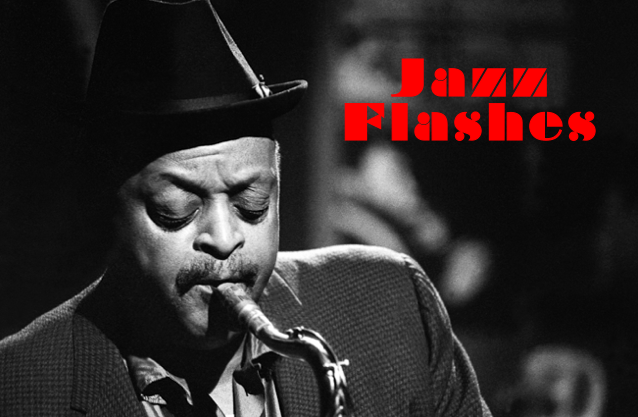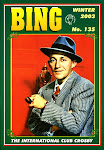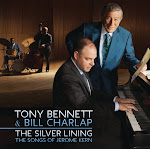Helped enormously by the introduction of the microphone, sweet-voiced crooner Gene Austin enjoyed spectacular success in the twenties and thirties with his sentimental ballads sung in a rather high-pitched voice, which turned him into a star on records and radio. Born in Gainesville, Texas, in 1900, Austin was steeped in jazz, blues, and cowboy music, and he was also an adept songwriter and later in his life would publish a very interesting autobiography, Gene Austin's Ol' Buddy. Although his recording output is rather meager throughout the forties and fifties, in 1957 NBC broadcast The Gene Austin Story, a TV movie based on his life, and this briefly revived interest in his music. Thus, Austin went into the RCA studios to cut a new album, Restless Heart, made out of both old songs, such as "Memories of You," "Where the Shy Little Violets Grow," and "Sharecroppin' Blues," and new tunes, such as Rodgers and Hart's "I Could Write a Book." The disc also aimed to showcase Austin's songwriting, and many of the tracks are self-penned—"My Restless Heart," "The More I See of Somebody Else," "Take Your Shoes Off Baby," and "There's a New Blue Heaven in the Sky," among others. He also attempts some pseudo-blues ("Wise Guys") and purposefully does not overlook his country side, and the result is a very pleasant album that finds Austin's voice sounding much lower and mellow that on his records from the twenties.
 |
| A younger Gene Austin |
When Leonard Feather said that Barbara Dane was "Bessie Smith in stereo," he was not exaggerating in the least; if anything, such an assessment of Dane's artistry sounds rather reductionist, considering that Dane is comfortable singing not only the blues, but also jazz and folk music. Her family roots lay in Arkansas, but Dane was raised in Detroit and by the late forties had moved to San Francisco, where she sang with Turk Murphy and Kid Ory, among many others. Throughout her long career, Dane has performed with some of the greatest names in jazz and blues, including Willie Dixon, Memphis Slim, Lightnin' Hopkins, Jack Teagarden, Art Hodes, and Louis Armstrong, to name but a few. Though all her recordings are worth a listen, the best of them all may well be Livin' with the Blues, the album she cut with Earl Hines in 1959 for Dot Records. It showcases her gift for singing jazz on well-known tunes such as "If I Could Be with You," "Why Don't You Do Right," and "Bye Bye Blackbird," and even attempts ballads like the Jack Teagarden-associated "A Hundred Years from Today" and Gershwin's "I Loves You Porgy." But most of all, she offers masterful interpretations of blues-inflected jazz classics such as the title track, "How Long, How Long Blues," and "In the Evenin'," ably supported by an orchestra led by the Fatha. This Dane-Hines collaboration ranks as one of the best vocal jazz albums of the 1950s and has been reissued by the European budget label Real Gone Jazz on a 4-CD set of Seven Classic Albums by Earl Hines that is very recommendable. However, it had already been made available last year on a much better Fresh Sounds release that pairs up Dane's Livin' with the Blues and On My Way, a 1962 effort for Capitol that is a more eclectic mix of folk, blues, and even gospel, but that includes some jazzier tracks such as "Crazy Blues" and "Good Old Wagon," with Kenny Whitson on cornet. Though the rest of the albums by the Fatha on the Real Gone set are also very interesting, the sound and packaging of the Fresh Sounds CD are superior. For more information on Barbara Dane, we refer you to her extremely interesting homepage.
Barely a year after Barbara Dane's collaboration with Earl Hines, Nancy Harrow went into the recording studio at Nat Hentoff's behest to cut an album for Candid Records. She was backed by Buck Clayton's Jazz Stars, a studio group that featured Clayton on trumpet, Dickie Wells on trombone, Tom Gwaltney on clarinet and alto sax, Buddy Tate on tenor sax, Danny Bank on baritone sax, Dick Wellstood on piano, Kenny Burrell on guitar, Milt Hinton on bass, and Oliver Jackson on drums. With such an array of talent, it is no surprise that the band is offered plenty of room to shine, and Harrow is inspired by the company she keeps to offer her best blues-inflected jazz singing with more than a touch of Mildred Bailey. The eight tracks recorded by Harrow and the Clayton group resulted in her debut album, the excellent Wild Women Don't Have the Blues, which appropriately mixes blues numbers such as the title track, "Take Me Back Baby," "I Don't Know What Kind of Blues I've Got," and "Blues for Yesterday" with bluesy ballads ("All Too Soon") and more straight-ahead jazz tunes like "Can't We Be Friends," "On the Sunny Side of the Street," and "I've Got the World on a String." Fresh Sounds Records has recently paired this masterpiece that every jazz aficionado should own with Harrow's second album, cut for Atlantic in 1962, You Never Know. Though quite different from her debut, this is an equally outstanding LP that grows more interesting the more one listens to it. Most of the tracks were thoughtfully arranged by pianist John Lewis, who plays piano on all of them, along with Jim Hall on guitar, Richard Davis on bass, and Connie Kay on drums, with the occasional addition of Phil Woods on alto and a string orchestra. Of course, blues material is still at the heart of the album ("Confessin' the Blues," "Tain't Nobody's Bizness If I Do") but Lewis's beautifully sparse arangements ensure that the focus is entirely on Harrow's unaffected, expressive voice. Overall, this is yet another of the many outstanding reissues, complete with excellent sound and notes, to which the people at Fresh Sounds have accustomed us—and hopefully they will keep them coming! For more information about Nancy Harrow, it is a good idea to visit her homepage.
The fusion of jazz and bossa nova is usually credited to Stan Getz and João Gilberto's albums from the early 1960s, which introduced these new, exciting Brazilian rhythms to American audiences at large. However, in 1953 and 1954, alto saxophonist Bud Shank and Brazilian guitarist and composer Laurindo Almeida recorded a series of tracks in a quartet setting (with Harry Babasin on bass and Roy Harte on drums) that already foreshadow the innovations that would come in full force some seven years later. Almeida had arrived in Los Angeles from his native Rio de Janeiro in 1947, instantly finding a place within the Stan Kenton orchestra. The results of his collaboration with Shank were released by World Pacific on a ten-inch album entitled Brazilliance—and brazilliant it was indeed, a very appealing mixture of Brazilian folk rhythms and jazz improvisation, mostly on original tunes by Almeida and other Brazilian composers, but also on Latin American songs such as "Acércate Más" and standards, as in the case of "Speak Low" and "Stairway to the Stars." Shank himself does not consider these recordings as strictly bossa nova, yet what Getz, Gilberto, and others would develop in the sixties is somehow already present here, albeit in embryonic form. This music is not important merely for historical reasons; rather, it is the very enjoyable product of a group of musicians mixing all sorts of influences in a search for an innovative sound, and the occasional doubts and insecurities only add to the undeniable charm of what the rolling tape captured at these sessions.
 |
| Brazilian guitarist Laurindo Almeida |






























No comments:
Post a Comment